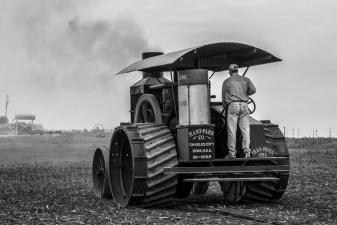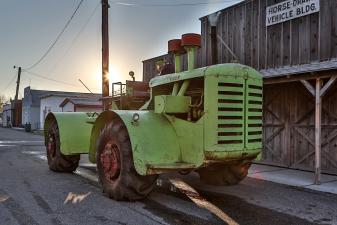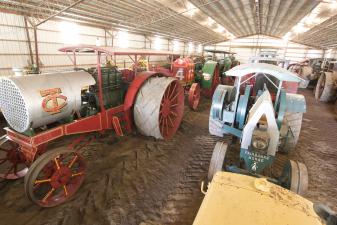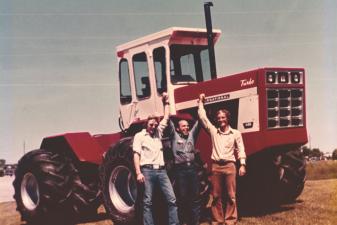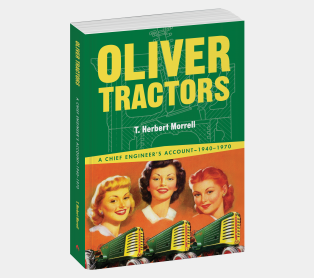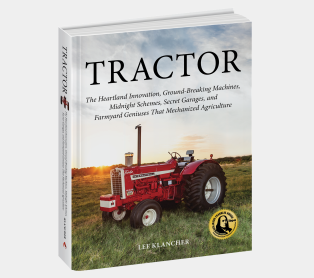The Great Tractor War

With Henry Ford’s foray into the farm-machine industry came a complete overhaul of the tractor marketplace. With zealous passion—and the finances to back it—he offered a tractor for the masses at a price that could hardly pull a profit. It was a war for survival for all industry competitors, and IHC lined up for battle with grit.
This is an excerpt from the book, TRACTOR.
Henry Ford and his Fordson changed the tractor landscape forever, and the battle between his company and the International Harvester Company (IHC) reshaped the tractor industry as well as the farm.
The times were not unlike the early days of the personal computer, with dozens of companies vying to create a new technology that would transform the world. Like the personal computer, the tractor promised to transform an industry, but early examples were too big and expensive for use on the average farm (or home).
If you think of IHC as Xerox or perhaps Hewlett-Packard—an established technology company with large resources and a relatively long history—and Fordson as Apple, you’ll get a reasonable idea of the battle.
The wild card here is Henry Ford, who was like a supercharged Elon Musk. Like Musk, Henry had founded a company that captured the imagination of the public. Unlike Tesla—which has driven a niche market—the Ford car radically changed the automobile from a luxury item for the rich, to a meat-and-potatoes consumable for the masses.
After his success with the automobile, Ford became America’s darling, his every move obsessed upon by the press. News that he would build an airplane was met with jubilation, and he was asked on several occasions to run for political office (he declined). Ford at one time started work on rewriting the Bible.
Ford had very deep corporate pockets and a zealous passion to bring power to the farm. He was willing to cut his margins to nearly nothing in order to sell his machines. The tractor industry had to respond to survive, and most manufacturers lowered prices in an attempt to gain some of the market that Ford had created. Tractor sales were up industry-wide, tractor use on the farm grew dramatically over the next five years, and Ford’s market share grew exponentially.
In 1921, in the midst of an economic and farm depression, IHC was fighting for sales. They dropped prices several times that year. They also initiated field demonstrations designed to showcase IHC tractors and convince buyers that IHC tractors were worth the extra money.
The weapons were the Titan 10-20 and International 8-16, and it seems they were up to the task of taking on the Ford. IHC regained a larger share of the sales that year, gaining 12 percent in market share. But Ford wasn’t finished.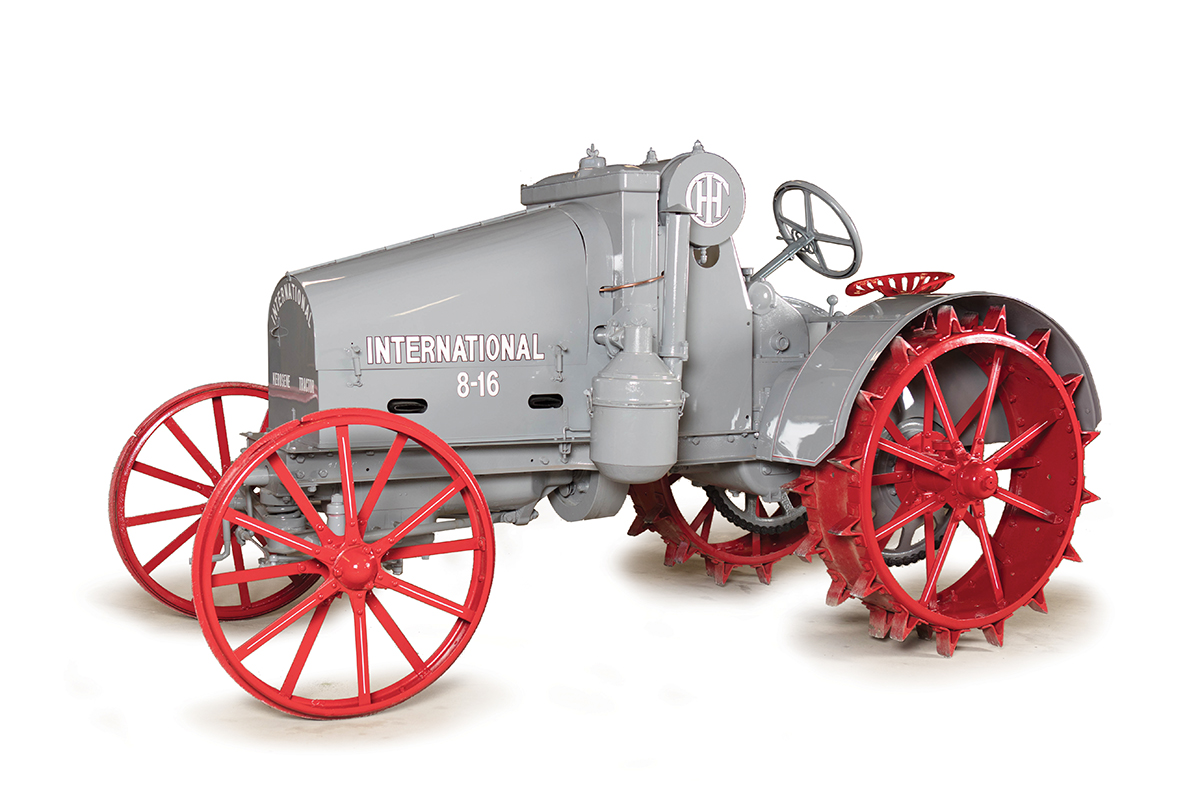 The International 8-16 was built at IHC Tractor Works, and was powered by a four-cylinder engine mated to a three-speed transmission. A top speed of 4 miles per hour was quick for the era, and the tractor underwent three different evolutions over its production life from 1918 to 1922. Mecum Auctions 2018 Spring Classic / Lee Klancher
The International 8-16 was built at IHC Tractor Works, and was powered by a four-cylinder engine mated to a three-speed transmission. A top speed of 4 miles per hour was quick for the era, and the tractor underwent three different evolutions over its production life from 1918 to 1922. Mecum Auctions 2018 Spring Classic / Lee Klancher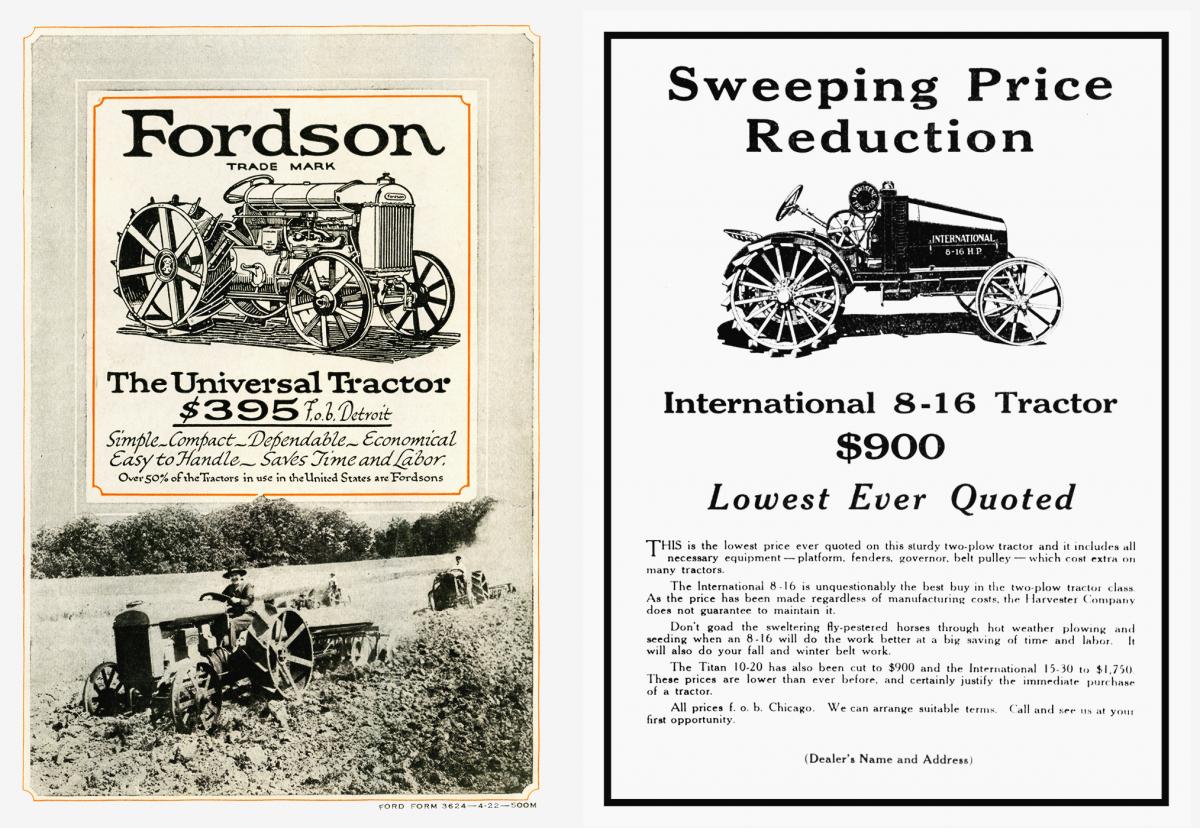 Left: When America entered a rough economic stretch, Henry Ford sold his Fordson for $395—below his cost. This put the tractor on the farm in droves, and also drove the competition out of business. Wisconsin Historical Society Press / 96641
Left: When America entered a rough economic stretch, Henry Ford sold his Fordson for $395—below his cost. This put the tractor on the farm in droves, and also drove the competition out of business. Wisconsin Historical Society Press / 96641
Right: As Ford cut prices, so did International Harvester. In the tough market of 1921, IHC was able to hold on to market share, but when the Fordson price went down to $395, IHC lost share. Wisconsin Historical Society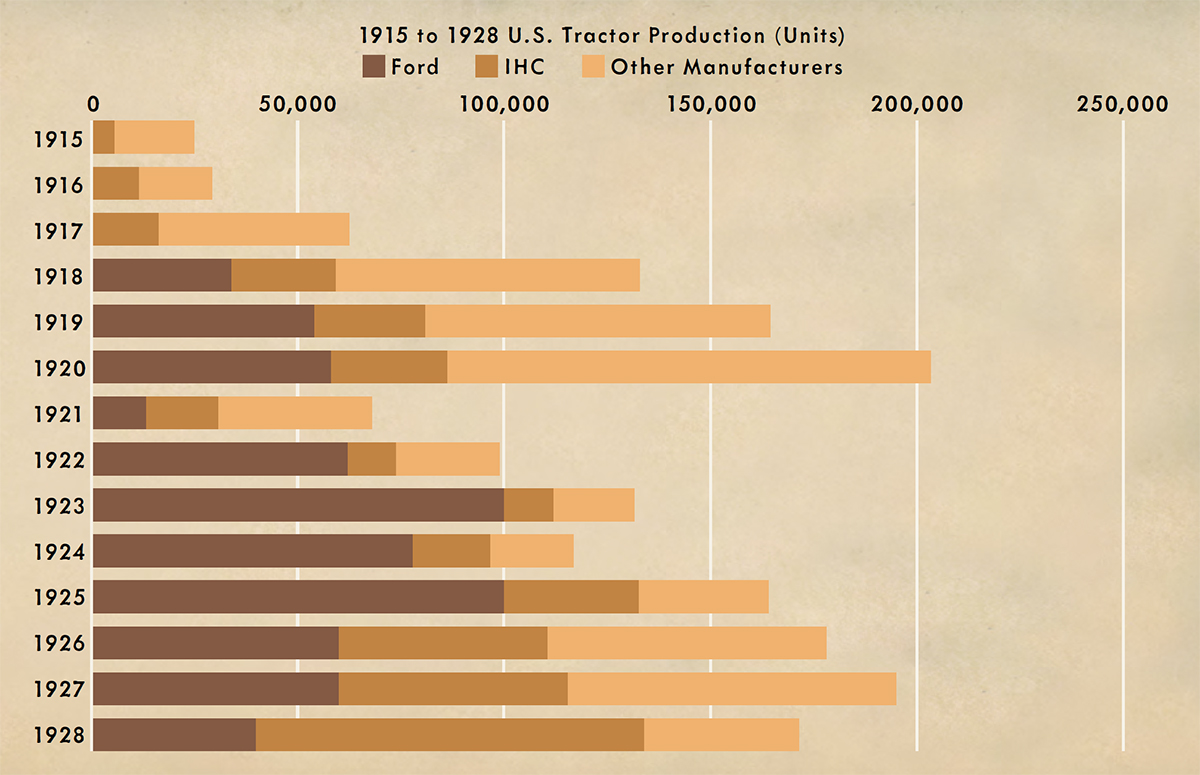 This chart shows how Ford, International Harvester, and the rest of the tractor industry compared in total production and market share. Although the lowered prices and increased competition brought good things to the farmer, it devastated the industry, and IHC was no exception. Almost overnight, IHC went from controlling 39 percent of the market in 1916, to half of that in 1918 (see chart).
This chart shows how Ford, International Harvester, and the rest of the tractor industry compared in total production and market share. Although the lowered prices and increased competition brought good things to the farmer, it devastated the industry, and IHC was no exception. Almost overnight, IHC went from controlling 39 percent of the market in 1916, to half of that in 1918 (see chart).
Ford responded in January 1922, dropping the price of the Fordson to $395, a price he admitted was below cost. IHC cut its prices as well, selling Titan 10-20s for $700 and International 8-16s for $670. The company also took the war to the fields, challenging Fordsons to plowing contests.
In Century of the Reaper, Cyrus McCormick had this to say about the tractor wars:
“A Harvester challenge rang through the land. Everywhere any single Ford sale was rumored, the Harvester dealer dared the Ford representative to a contest. No prizes were offered, no jury awarded merit to one or another contestant. No quarter was given and none was asked. Grimly the protagonists struggled, fiercely they battled for each sale. The reaper war was being refought with new weapons.”
By 1926, IHC had its new McCormick-Deering tractors on the market and was regaining the dominance of the past. In 1928, Ford bowed out of the US tractor market, and IHC’s new unit-construction McCormick-Deerings, plus the innovative Farmall, helped IHC take control of the market; 55 percent of all tractors sold that year bore the IHC logo.
Ford’s timing was right, as the farm was ready for motive power. Also true is that the Fordson’s affordable entry into the tractor market drove the market to grow.
Check back here on the Octane FUEL Blog for more tractor-history and find TRACTOR on our website HERE.


